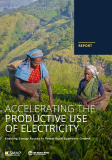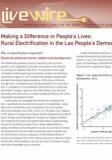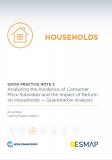Publications
Access to electricity is key to any development initiative and there is a growing body of literature on the impact of rural electrification on development. However, most studies have so far relied on cross-sectional surveys comparing households with and without electricity, which have well known causal attribution problems. This paper is one of the first studies to examine the welfare impacts of households’ rural electrification based on panel surveys conducted in 2002 and 2005 for some 1,100 households in rural Vietnam,. The findings indicate that grid electrification has been both extensive (connecting all surveyed communes by 2005) and intensive (connecting almost 80 percent of the surveyed households by 2005). Vietnam is fairly unique in that once electricity is locally available, both rich and poor households are equally likely to get the connection. The econometric estimations suggest that grid electrification has significant positive impacts on households’ cash income, expenditure and educational outcomes. The benefits, however, reach a saturation point after prolonged exposure to electricity. Finally, this study recommends investigating long-term benefits of rural electrification – not just for households, but for rural economy as a whole.
Khandker, Shahidur R., Barnes, Douglas F., Samad, Hussain, and Minh, Nguyen Huu. 2008. Welfare Impacts of Rural Electrification: Evidence from Vietnam. ASTAE. Washington, DC: World Bank.



